How to Start Yoga at Home:
Beginning yoga at home can be quite thrilling and at the same time a source of numerous challenges. If you’re not following a particular yoga studio or teacher, you may be asking yourself questions like, where do I start? How do I prepare a space for practice? Which yoga positions are good for beginners? Worry not-for here is a complete guide on how to introduce yoga into the home setting as well as easy to understand instructions and hints on poses for first timers.
Yoga is a all inclusive technique that helps to bend the body and mind, strengthens the muscles and lessen tension. It can be done with minimal equipment investment and little floor space: all that requires is some time, some interest, and an attitude.
How to Start Yoga at Home:
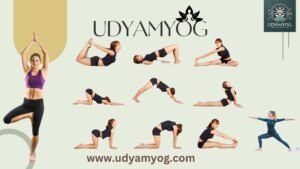
The Basic Procedure of Getting to Yoga at Home
Here is how we can demystify yoga, and easily incorporate it into your home practice schedule.
-
Make Yoga Its Own Practice
Being disciplined about creating a dedicated space at home for yoga will keep you on track in practicing it. It doesn’t matter if you have a large house – you just need enough room for yourself to move without colliding with the furniture.
Find a quiet spot: It is important to select a room or a corner in a house, which has low interference to encourage practice without intermission.
Make it cozy: Includes items such as candles, music that puts personality to some quite soothing kind of feel, or even pot plants that add a natural touch to the event.
Use a yoga mat: In this case, a non-slip yoga mat is good for both comfort and stability than any other yoga mat. If you do not have a favorite, a soft carpet can also be makeshift in the meantime.
-
Get the Right Yoga Gear
Though yoga doesn’t require much equipment, having a few essentials can enhance your practice:
Yoga mat: A decent yoga mat protects your joints from stress and guarantees you do not slide during exercise.
Yoga blocks: It is easier to retain body alignment when using blocks particularly when you are stretching in a given position.
Strap or belt: Yoga strap is also good for stretching and can help you penetrate as far as you need in a certain pose.
Comfortable clothing: Use comfortable and appropriate clothing which enables you to practice some movements.
-
Start with Basic Yoga Poses
While beginning Yoga in the comfort of your home, try the basic Yoga exercises that helps to strengthen the muscles, tones the body and gradually gain awareness about your body. Here are some beginner-friendly poses to include in your practice:
How to Start Yoga at Home:
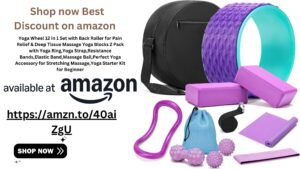
How to Start Yoga at Home:
-
Mountain Pose (Tad asana)
It is a basic position to be practiced by standing with feet parallel to each other, with arms at the sides of the lower abdomen with palms facing inwards and fingers pointing down.
Steps:
-
Put your feet symmetrically and parallel to each other, whereas your arms should rest at your side of the body.
-
Push the wheels even against the floor through your feet and squeeze your thighs.
-
Breathe in deeply to establish the exercise properly, lift the chest, back and roll the shrugs backwards.
-
Your chin should be horizontal to the floor and keep looking forward.
-
Wait for 30 seconds to 1 minute and be mindful of your breaths.
-
But the most popular and typical poses of it are the following: Downward-Facing Dog (Adho Mukha Svanasana)
While downward facing dog is an important exercise in yoga, it elongates every muscle and makes the arms, legs and spine stronger and improves the circulation of blood.
Steps:
- It can be done while lying on your tummy; however, the first step of this exercise is done by placing your hands on the floor and coming into a four-point position with the wrists inline with shoulders and knees with the hips.
- Take your fingers apart and ground them onto the mat.
- Breathing out as you bend your knees and bring your thighs toward your shoulders pulling your head, shoulders, and buttocks in a line with nicely arched lower back.
- Tuck your tailbone under and engage the lower abdominals and press your heels towards the floor (they don’t have to make contact with the ground).
- Stand still to maintain the position for one minute while inhaling and exhaling.
-
Child’s Pose (Balasana)
Child’s Pose is a resting posture which was really helpful in stretching the lower back, hip and thigh muscles. It is helping and fun for taking a break from work or from any form of stress.
Steps:
- Start on your knees with the big toes touching each other and the knees about six inches apart.
- Come onto your sitting bones and bring your arms forward, touching your forehead to the floor.
- Now take a deep breath in and then let all the muscles in your body go limp and your chest cave in towards the floor.
- This take 1 – 2 minutes, you will just have to try to take very deep breaths.
How to Start Yoga at Home:
-
Warrior I (Virabhadrasana I)
Warrior I is an intense posture that develops the leg and stabilizing muscles. It also helps to expand the hips and chest.
Steps:
- Raise yourself up on your toes and move your right foot backward as far as it will go.
- Slightly bend your left knee forward but ensure you do not bend your right knee at the rear.
- Raise your arms overhead, and find the push through both the soles of the feet.
- Tensing and contracting the stomach muscles regularly for 2- 3 sets of 30 seconds to 1 minute and then flipping to the next side.
-
Cobra Pose (Bhujangasana)
Cobra Pose is beneficial for toning back muscles and that is why this position helps to maintain correct posture of the backbone. It’s a moderate level backbend pose that helps lessen the tension in the spinal region.
Steps:
- For this posture, start by laying on the mat with your legs stretched out and your hands at your shoulder width.
- Breathe in deeply while pushing the back of your hands against the ground while coming up with your chest.
- stand with your shoulders relaxed, bring in your elbows just a little and keep your eyes straight ahead.
- Exhale, hold for 15-30 seconds and then lower back down to the mat.How to Start Yoga at Home:
-
Concentration on movements (Maneuvers of the breath)
Pranayama an important component of yoga helps to restrain the thoughts and emotions and to strengthen your practice. Start with simple breathing exercises like:
Deep belly breathing: Take a comfortable position and take a deep breath with your nose and imagine that your belly is expanding. Breathe out straight, pulling your belly button towards your spine.
Alternate nostril breathing (Nadi Shodhana): Put your thumb on the right nostril to block it while the other three fingers are to block the left, and then vice versa. Repeat on the other side.
To help you keep your authorities in check while practicing yoga, you will benefit from mindful breathing.
- Create a Routine
In yoga, consistency is very important when practicing yoga at home. You don’t have to set an hour per day to practice – 15-30 minutes to get the benefits. Here’s how to create a sustainable routine:
Set a time: Be available at a particular time, when you are free from interruptions and physical or emotional distractions. That is so for many people after either early mornings or in the evenings.
Start small: However, duration of the initial sessions should be limited and the time should gradually be increased depending on the trainers preference.
Combine poses: It is effective to have standing, seated and lying down poses in equal numbers to balance the type of poses in a routine.
- Please use our blog website www.udyamyog.com
I and other fellow yogis have compiled some useful tips and links that will serve as your guide in doing yoga at home.They include websites www.udyamyog.com that provide free yoga for those interested with varies level.ture that helps improve posture, balance, and grounding.
Steps:
- Stand tall with your feet together and arms by your sides.
- Press evenly through your feet, and engage your thighs.
- Inhale, lift your chest, and roll your shoulders down and back.
- Keep your chin parallel to the ground and gaze straight ahead.
- Hold for 30 seconds to 1 minute, focusing on steady breathing.How to Start Yoga at Home:

-
Downward-Facing Dog (Adho Mukha Svanasana)
Downward Dog is a key yoga pose that stretches the entire body, strengthens the arms and legs, and improves circulation.
Steps:
- Start on your hands and knees, with your wrists directly under your shoulders and knees under your hips.
- Spread your fingers wide and press into the mat.
- Exhale as you lift your knees off the ground, straightening your legs and forming an inverted V-shape with your body.
- Keep your spine long, and press your heels toward the ground (they don’t have to touch).
- Hold the pose for 1 minute, breathing deeply.
-
Child’s Pose (Balasana)
Child’s Pose is a gentle resting pose that helps stretch the lower back, hips, and thighs. It’s great for relaxation and relieving tension.
Steps:
- Begin in a kneeling position with your big toes touching and knees slightly apart.
- Sit back on your heels, and stretch your arms forward, lowering your forehead to the mat.
- Breathe deeply and relax your entire body, allowing your chest to sink toward the floor.
- Stay here for 1-2 minutes, focusing on deep breathing.
-
Warrior I (Virabhadrasana I)
Warrior I is a powerful pose that strengthens the legs and improves balance. It also opens up the hips and chest.
Steps:
- Stand tall, and take a big step back with your right foot.
- Bend your front knee while keeping your back leg straight.
- Raise your arms overhead, and press firmly through both feet.
- Hold for 30 seconds to 1 minute, then switch sides.
-
Cobra Pose (Bhujangasana)
Cobra Pose strengthens the back muscles and helps improve posture. It’s a gentle backbend that can relieve tension in the spine.
Steps:
- Lie face down on your mat, with your legs extended and palms placed under your shoulders.
- Inhale as you press into your hands, lifting your chest off the ground.
- Keep your elbows slightly bent and your gaze forward.
- Hold for 15-30 seconds, then release back down to the mat.
-
Focus on Breathing (Pranayama)
Breathing, or pranayama, is an essential part of yoga that helps calm the mind and deepen your practice. Start with simple breathing exercises like:
Deep belly breathing: Sit in a comfortable position and inhale deeply through your nose, allowing your belly to expand. Exhale slowly, drawing your belly in.
Alternate nostril breathing (Nadi Shodhana): Close your right nostril with your thumb, inhale through your left nostril, then close your left nostril and exhale through the right. Repeat on the other side.
Practicing mindful breathing will help you stay focused and present during your yoga sessions.
-
Create a Routine
Consistency is key when starting yoga at home. It doesn’t have to be a long session-15-30 minutes a day is enough to experience the benefits. Here’s how to create a sustainable routine:
Set a time: Choose a time of day when you can practice without distractions. Early mornings or evenings work best for many people.
Start small: Begin with shorter sessions and gradually increase the duration as you become more comfortable.
Combine poses: Mix and match standing, seated, and lying down poses to create a balanced routine.
How to Start Yoga at Home:
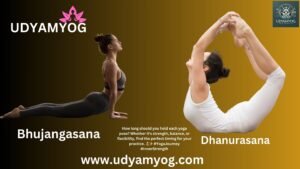
How to Start Yoga at Home:
-
Use our blog website www.udyamyog.com
There are plenty of online resources to help guide your home yoga practice. Websites, www.udyamyog.com offer free yoga that cater to all levels. Some great options include:
-
Listen to Your Body
Another vital reactivity of yoga practice is to heighten the perception of your body’s requirements. It’s not about over-exerting oneself whether it be physically, mentally or emotionally – it is about practising with moderation and mindfulness.
Modify poses: You don’t have to do full poses or make them challenging, use blocks or straps to ease the stretch.
Rest when needed: If a pose is too much for your back, don’t force it and fall into Child’s Pose, before attempting the pose again.
Be patient: Compound movements are your friends: Squats, Deadlifts, Bench Press, Shoulder Press, Pull-ups, Rows, Dips, and Chins It’s also important to know that muscles take time to become more flexible and stronger, so to all you whiners out there complaining about how sore you are and how much you hate lifting wait till you get some muscle on you and see how sore you’ll be carrying groceries or going up and down stairs
Why It Is Essential to Start Yoga at Home
Practicing yoga at home offers numerous benefits:
Flexibility: You can practice whenever you will want to do it, without being bound to your own studio time.
Comfort: If your gym is close to your home then you can do some exercises while you are naked by staying in your house since you will feel relaxed and at ease when practicing most postures.
Personalization: It can be designed to meet your needs and goals they range from relaxation, strength, and flexibility needs.
Cost-effective: Training at home eliminates expenses that come with membership to studio and classes fees.
Conclusion
Yoga for beginners at home is one of the best ways to better your health physically and mentally without having to leave your space. To enjoy the positive changes that goes with practicing yoga, one has to dedicate some time and effort plus use the right materials to create a steady yoga practice. Yoga is a process, not a destination; changes occur gradually, and it is always beneficial to have fun at what you are doing rather than strive for achievement.
By doing these steps and including the poses above you can start a yoga practice that is very fulfilling at the comfort of your own home. Namaste! www.udyamyog.com
How to Start Yoga at Home:
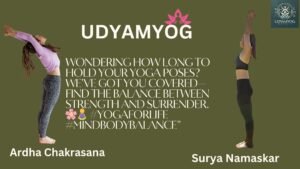
How to Start Yoga at Home:

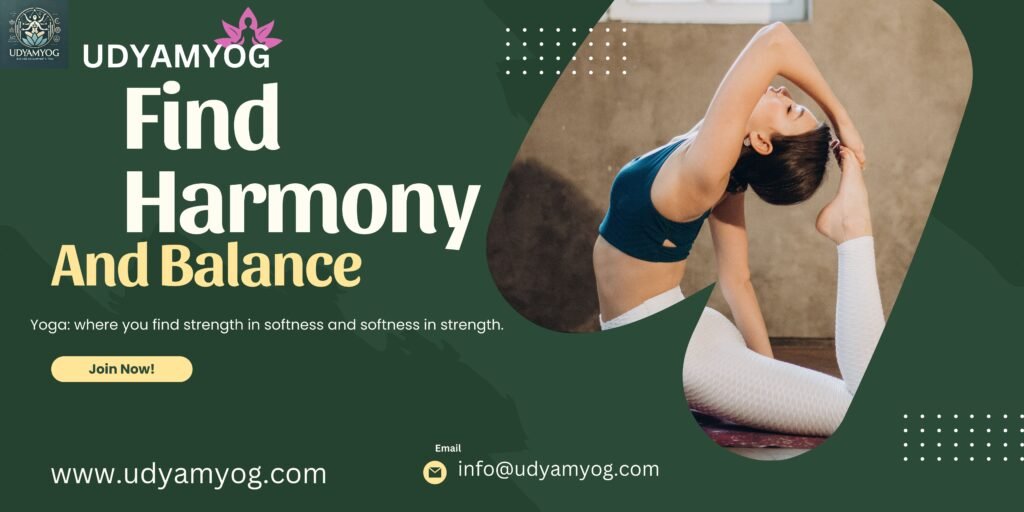

1 thought on “How to Start Yoga at Home:”